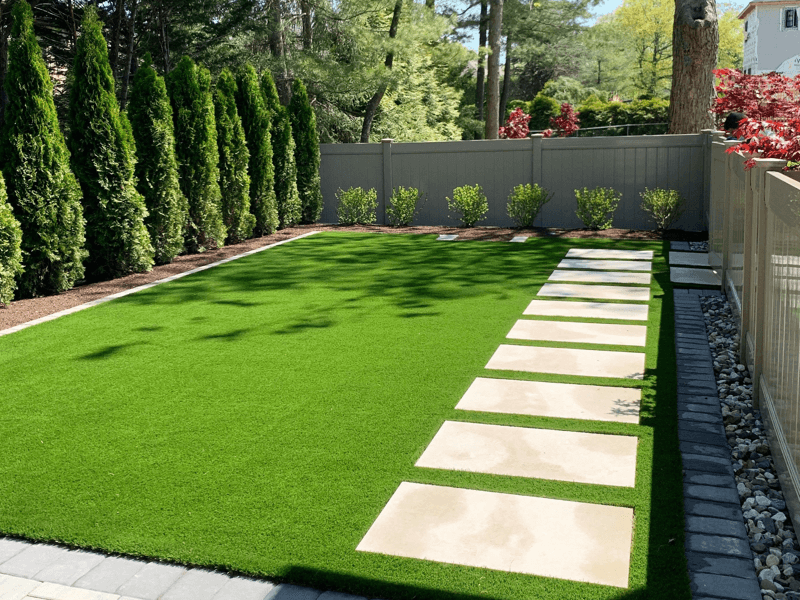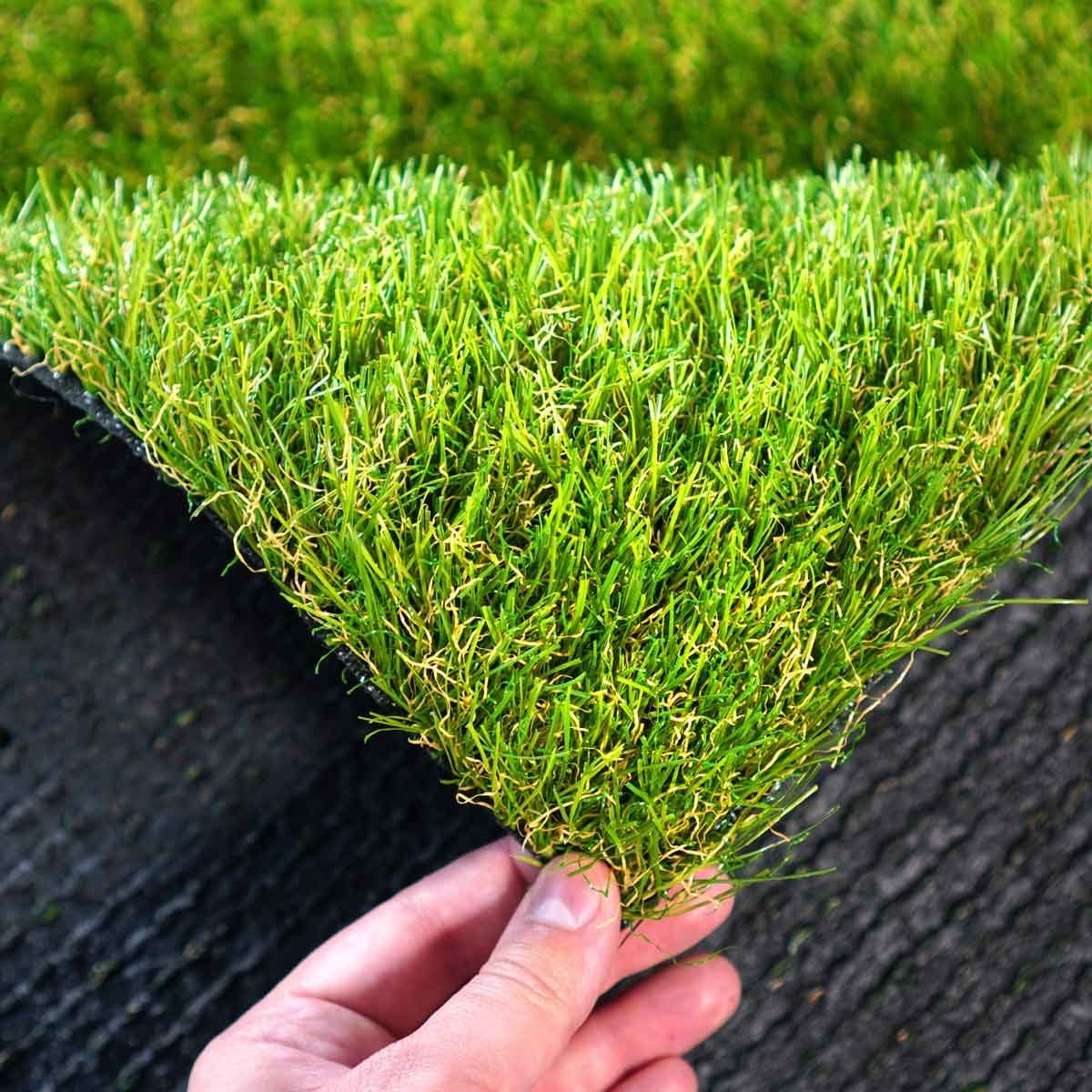Delve Into the Environmental Perks of Opting for Artificial Turf Solutions
The fostering of synthetic lawn solutions provides a compelling possibility to address pushing ecological obstacles. By considerably minimizing water usage and lessening the application of unsafe chemicals, these choices not just promote sustainable landscape design however likewise safeguard neighborhood communities.
Water Preservation Advantages
One of the most substantial benefits of man-made turf is its ability to save water. In contrast, synthetic lawn does not require watering, considerably decreasing the overall need for water resources.
By eliminating the requirement for routine watering, man-made grass adds to lasting landscape practices and aids alleviate the environmental impact of too much water intake. In addition, the preservation of water includes the reduction of runoff, which can bring about soil disintegration and river contamination.
In addition, the installment of fabricated lawn allows homeowners and municipalities to allot water resources more effectively, concentrating on vital usages such as drinking water and agriculture. The shift in the direction of synthetic turf not just promotes liable water usage but additionally straightens with more comprehensive environmental objectives focused on maintaining natural resources.
As areas significantly focus on sustainability, the water conservation advantages of synthetic grass provide an engaging case for its fostering in property and commercial landscaping tasks.
Reduced Chemical Use
The change to artificial turf considerably reduces the reliance on chemical treatments commonly made use of in natural turf upkeep. Conventional grass management normally includes the application of herbicides, plant foods, and pesticides to promote development and control parasites. These chemicals can pose dangers to human wellness, neighborhood wildlife, and the atmosphere, adding to soil and water contamination.
In comparison, synthetic grass gets rid of the requirement for these hazardous materials. When set up, it needs very little upkeep, primarily including regular cleansing and infrequent infill replenishment. This reduction in chemical use not only benefits the instant environment however likewise contributes to wider ecological security. By minimizing the launch of synthetic compounds right into the environment, synthetic grass promotes healthier dirt and water systems.
Moreover, the absence of chemical drainage associated with synthetic grass installations helps shield regional waterways from air pollution, supporting water life and maintaining biodiversity. Arizona turf. As neighborhoods progressively prioritize lasting techniques, going with synthetic grass provides a viable option that lines up with ecological conservation objectives. With this shift, building owners can enjoy lush green spaces without compromising ecological wellness, leading the way for an extra sustainable future
Reduced Carbon Footprint

In addition, the installation of man-made lawn can result in substantial water preservation. Natural yards call for substantial amounts of water for irrigation, which not only contributes to the carbon footprint connected with water extraction and treatment but likewise pressures regional water resources. On the other hand, synthetic grass requires marginal maintenance, requiring no watering, consequently substantially decreasing water usage and its associated power costs.
In addition, the long life of synthetic grass adds to its decreased carbon effect. With a lifespan of up to 15 years or even more, the need for frequent replacements is lessened, causing less waste and reduced energy consumption in manufacturing and getting helpful site rid of conventional lawn choices. On try these out the whole, fabricated grass offers a sustainable choice for eco conscious landscape design.
Environment Preservation
Environment preservation is a critical consideration in the debate over landscaping options, specifically when comparing man-made turf to natural grass. All-natural yard lawns often require considerable upkeep, including the use of fertilizers, pesticides, and herbicides, which can adversely affect local ecological communities. These chemicals can seep right into the dirt and rivers, hurting indigenous flora and animals and interrupting regional habitats.
On the other hand, synthetic turf provides an opportunity to lower the environmental footprint of landscaping. By choosing artificial turf, home owners can decrease the interruption of all-natural habitats related to standard lawn treatment methods. Synthetic grass eliminates the demand for dangerous chemicals, therefore shielding close-by wild animals and maintaining the honesty of bordering ecological communities. In addition, the setup of artificial lawn can bring about the conversion of previous turf locations right into even more biodiverse landscapes, such as pollinator yards or indigenous plant locations, which can support neighborhood wildlife.
Inevitably, the shift to artificial grass not just preserves water and reduces maintenance efforts however also fosters a much more unified connection in between human tasks and the natural surroundings, advertising habitat conservation while doing so.
Long-Term Sustainability
Lasting sustainability is an important variable in assessing the benefits of synthetic grass over typical turf yards. One of one of the most significant advantages of synthetic grass is its toughness; it can last up to 15-20 years with minimal maintenance, whereas all-natural lawn calls for regular reseeding and substitute. This longevity lowers the demand for constant sources, such as water, fertilizers, and chemicals, which are essential for preserving a healthy and balanced yard yard.
Furthermore, synthetic grass adds to a decrease in carbon exhausts related to lawn care equipment. Conventional yards frequently require gas-powered mowers, trimmers, and blowers, every one of which add to air pollution. Artificial turf companies phoenix. On the other hand, synthetic grass eliminates the requirement for such devices, promoting a cleaner atmosphere
Moreover, the production of fabricated grass significantly uses recycled products, enhancing its sustainability profile. As producers embrace green methods, the environmental footprint of synthetic lawn proceeds to reduce.

Final Thought
The adoption of fabricated grass options presents significant ecological advantages, consisting of considerable water preservation, decreased dependence on hazardous chemicals, and a reduced carbon footprint. Synthetic grass aids in maintaining natural environments by lessening land disruption and promoting reference long-lasting sustainability via the use of resilient materials. Collectively, these factors highlight the potential of synthetic grass to contribute positively to ecological health and use a feasible choice to typical landscaping methods in a significantly resource-conscious world.
In contrast, man-made turf does not need watering, significantly lowering the total need for water resources. By minimizing the release of synthetic compounds right into the community, fabricated turf promotes much healthier dirt and water systems.
Furthermore, the installation of man-made grass can result in considerable water conservation. In comparison, man-made turf requires minimal upkeep, needing no watering, thus substantially minimizing water usage and its linked power costs.
